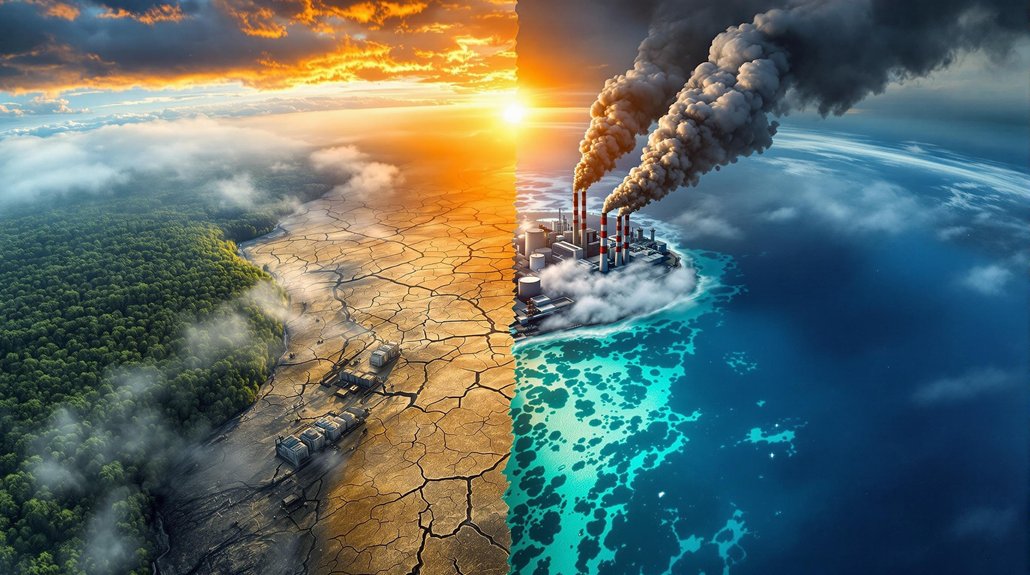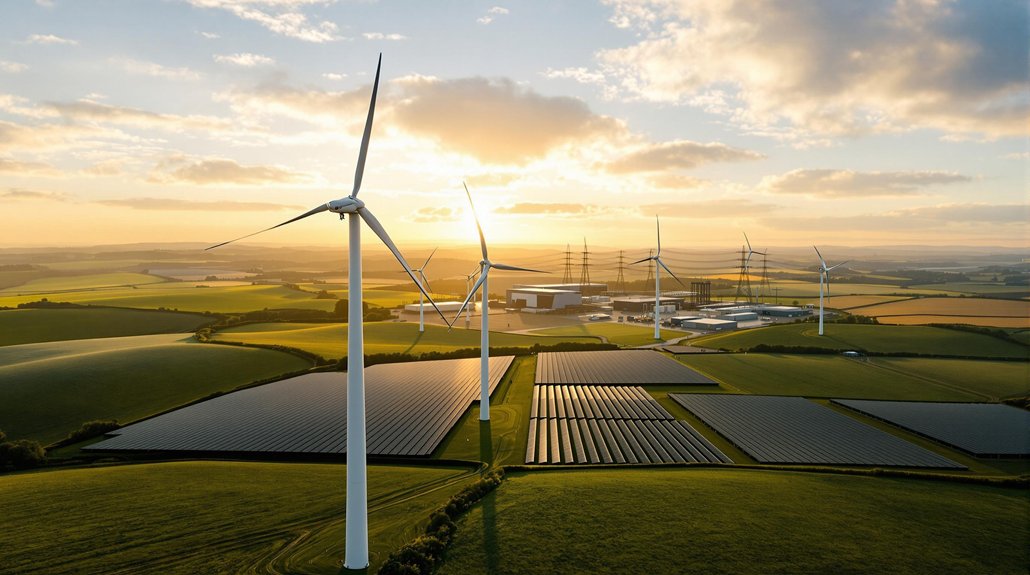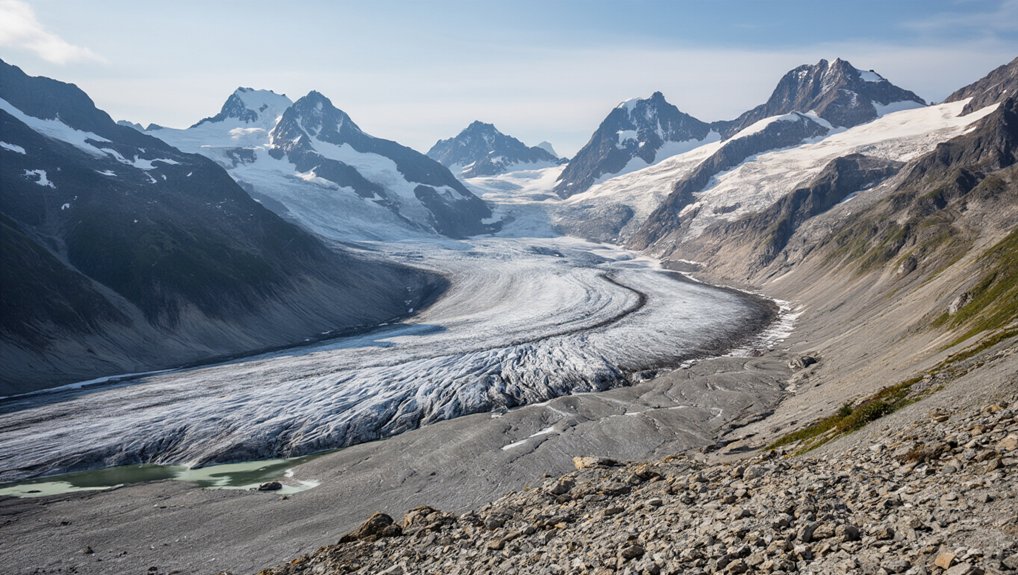Scientists report Earth’s essential signs are declining rapidly as greenhouse gases reach historic levels. Carbon dioxide from fossil fuels continues climbing while methane emissions from livestock add to the problem. Last year broke temperature records worldwide, triggering more extreme weather events. These changes threaten both wildlife and food production globally. With human population growth increasing resource demands, experts warn the planet’s systems face unprecedented stress. What happens next may determine our collective future.
While scientists have long warned about climate change, Earth’s health indicators now show unprecedented decline across multiple fronts. Global temperatures hit all-time highs in 2023, with projections showing we could reach 1.7°C above pre-industrial levels within months. If current trends continue, we’re on track to exceed 2°C warming within 75 years, a threshold scientists consider dangerous.
Earth’s vital signs are flashing red as temperatures soar toward dangerous thresholds scientists have long feared.
The main culprit behind this warming is the record-high concentration of greenhouse gases in our atmosphere. Carbon dioxide from burning fossil fuels continues to increase, while methane emissions are rising rapidly due to expanding livestock populations. Each day, about 170,000 more ruminant animals join the global herd, adding to these emissions. Electricity generation alone contributes a staggering 14.6 gigatons of CO2 annually, accounting for over 40% of all energy-related emissions.
Our planet’s biodiversity is suffering as well. Species are disappearing at unprecedented rates as forests, especially in tropical regions, are cleared for human use. This loss threatens essential services like pollination and soil health, which we depend on for food production.
Extreme weather has become more common and severe. Flooding, drought, heatwaves, and storms displace communities and damage crops. Recent examples include devastating floods in East Africa and back-to-back hurricanes in the U.S. Southeast. These disasters create ripple effects through food security, infrastructure costs, and human displacement.
Human population grows by roughly 200,000 people daily, intensifying resource demands. Urbanization and increasing consumption further strain Earth’s systems. Even as renewable energy expands, it can’t keep pace with growing energy demand, and fossil fuel use remains at historic highs.
Perhaps most concerning are the 25 out of 35 planetary crucial signs now at record extreme levels. The year 2024 has already set alarming records with a +1.56°C increase above the 1880-1920 baseline, making it the warmest year in recorded history. Scientists warn we’re approaching tipping points that could trigger irreversible changes in Earth’s climate system. The planet is entering what experts describe as a “critical and unpredictable” new phase.
These interconnected challenges paint a troubling picture. As greenhouse gases continue their upward climb, Earth’s systems show increasing signs of strain, with potential consequences for all living things that call this planet home.








